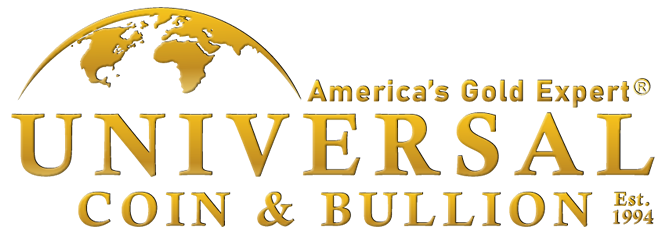
June 2025 – Week 4 Edition
My Weekly Coin Pick Just Happens to be One of My Favorite Coins
This week, I recommend adding an expertly selected, lustrous 1914-D $2 ½ Indian gold coin in gem uncirculated, MS64 condition to your portfolio. The $2 ½ Indian series has long been a favorite of mine. I have written two Numismatic Literary Guild (NLG) Award-winning books on this very popular series of historic coins. Over the years, these books have stimulated many coin enthusiasts to add this series of coins to their collections, further supporting the market.
The $2 ½ and $5 Indians, first issued in 1908, were minted with the first and only fully incuse design on a U.S. gold coin. It only takes 15 coins to complete a business strike $2 ½ Indian set. This completable factor adds to the set-building collector attraction.
One of my favorite Indian Quarter Eagles is the 1914 Denver-minted coin. In the entire 15-coin series, Denver only minted three dates of these gold coins: the relatively common 1925-D and the rare 1911-D and 1914-D.
The 1914-D has a relatively low mintage compared to most other coins in the series and a low survival rate, partly due to the U.S. Government’s recall of gold in 1933, known as Executive Order 6102, which led to the melting of many gold coins.
Another point to consider is that I prefer coins with a significant spread between grades. The MS64 1914-D $2 ½ costs about five times more in MS65, which is just one grade higher on the Sheldon Scale. This allows for price movement between the two grades and gives collectors an opportunity to make a potential profit should they decide to divest their collection. The 1914-D $2 ½ Indian gold coin in MS64 is also currently selling significantly lower than its previous high.
The 1914-D was an easy choice for me to include in our innovative 20/20 Program, where I analyze population, popularity, rarity and other factors to find the best value in rare coins on the market, and it has trended higher since that time.
For all those reasons and more, you will treasure this beauty when you get it in your hands, as many have before you. Contact one of our professional representatives today, as I was only able to acquire a limited number of these coins in MS64 condition.
Gold Tends to Soar, Long-Term, When New Major Wars Break Out
Last week, I showed you how gold tends to rise during the first few days after the outbreak of a new major war, charting the last five eruptions of violence in the Middle East since 2020. The latest outbreak confirmed that trend with gold rising nearly 2% to a new record high of $3,444 following Israel’s strike against Iran on Friday, June 13, 2025. Since then, however, gold has fallen off those highs to return to where it was on June 11, two days before Israel’s air attacks.
This raises the more important question of how gold tends to respond to major wars in the longer term. Since October 6, 2023, the day before Hamas invaded Israel, gold and silver have outperformed stocks by a long shot, with gold more than doubling the S&P 500 since then:

This isn’t a one-time event. Gold has consistently risen in price following the launch of major wars or military conflicts. Gold’s largest gains came right after the two major invasions of Afghanistan began. Gold was trading at just $405 on December 1, 1979, but when Russia invaded Afghanistan on December 27, gold more than doubled to reach its early 1980 peak of $850 per ounce on January 18. Silver tripled from $17 on December 1, 1979, to $50 in the same time frame, mostly due to the Hunt Brothers' cornering of the silver market but gold’s sharp rise was mostly due to global unrest.
Something similar happened – in slower motion, taking about 10 years – after 9/11, when the United States attacked Afghanistan on October 7, 2001, and fought a too-long 20-year battle there, with President Bush doubling down in Iraq, starting in April of 2003. The combination of those two long and costly military efforts led to a bonanza in gold and silver, with gold rising from a $255 low in April 2001 to a peak of $1,910 (+650% in 10+ years) in September 2011, and silver rising from $4 per ounce in late 2001 to $50 per ounce (+1150% in 9.5 years) by April of 2011.
As we’ve seen recently, gold has surged since the Ukrainian and Israeli wars began in 2022 and 2023, and we have yet to see how far gold and silver will go in this cycle but they have virtually doubled stocks so far. For now, it is important to remember that gold and silver prices vary each day with the headlines, so it does us little good to be whipsawed by daily price swings.
The U.S. Dollar Index (DXY) is now down 11% this year, reaching a three-year low, which Bank of America and I both predicted in 2024 would likely occur. Over the long term, additional global unrest, combined with U.S. deficits and dollar erosion, will likely cause gold and silver to beat all paper currencies – and beat most stock market indexes as well.
Happy to Announce, I Won Two More Regional Writing Awards
In the past few weeks, I received two more local awards in the Beaumont, Texas area. The first was an honorary award from the Better Business Bureau (BBB) Serving Southeast Texas, recognizing me as a “Friend of the BBB.” Officially, the award is known as the “John L. Bell Friend of the BBB Award” and I said I would only accept the award if they would allow my walk-up song to the stage be the theme from “Golden Girls” (since I’m of that age now and the title fits), “Thank You for Being My Friend.”
The second award came from the Press Club of Southeast Texas, with first-place honors for my guest column in the Beaumont Enterprise, which advocated for removing the one-cent coin (penny) from our array of U.S. Mint circulating coinage each year. My position in this award-winning column highlighted the government's lack of fiscal responsibility, which results in the annual losses of tens of millions of dollars due to the production of pennies at a significant loss. I believed it would make sound financial policy to eliminate pennies from our circulating coinage, or at the very least, change their composition, size, and weight to ensure they cost taxpayers less money to produce.
The topic gained significant traction after Donald Trump won his second term as President of the United States. Now, government leaders have decided to phase out the one-cent coin beginning in 2026, as coin blanks continue to run out. The United States was not the first country to move towards this decision, as Canada, Australia and New Zealand have ceased production of their one-cent coins, as well.

Gold is down $50 over the past week, as it appears the Iranian war has reached a “cease fire,” negotiated by President Donald Trump, who encouraged the deal through military strength, dropping bunker-busting missiles and destroying Iran’s secret nuclear facilities. This has caused stocks to surge and metals to pause their ascent but it’s important to realize that sometimes these negotiations fall apart. Hopefully, that will not happen in this scenario. It’s also important to remember that 24/7 news coverage of this war has kept American minds off deficits, tariffs and other domestic challenges, which have keep gold and silver strong, as the U.S. Dollar Index (DXY) dropped to a 3-year low of 97.88 on Tuesday morning, down 1.4% in 24 hours, and down 11% since its January 13, 2025 peak.
All statements, opinions, pricing, and ideas herein are believed to be reliable, truthful and accurate to the best of the Publisher’s knowledge at this time. They are not guaranteed in any way by anybody and are subject to change over time. The Publisher disclaims and is not liable for any claims or losses which may be incurred by third parties while relying on information published herein. Individuals should not look at this publication as giving finance or investment advice or information for their individual suitability. All readers are advised to independently verify all representations made herein or by its representatives for your individual suitability before making your investment or collecting decisions. Arbitration: This company strives to handle customer complaint issues directly with the customer in an expeditious manner. In the event an amicable resolution cannot be reached, you agree to accept binding arbitration. Any dispute, controversy, claim or disagreement arising out of or relating to transactions between you and this company shall be resolved by binding arbitration pursuant to the Federal Arbitration Act and conducted in Beaumont, Jefferson County, Texas. It is understood that the parties waive any right to a jury trial. Judgment upon the award rendered by the Arbitrator may be entered in any court having jurisdiction thereof. Reproduction or quotation of this newsletter is prohibited without written permission of the Publisher.



